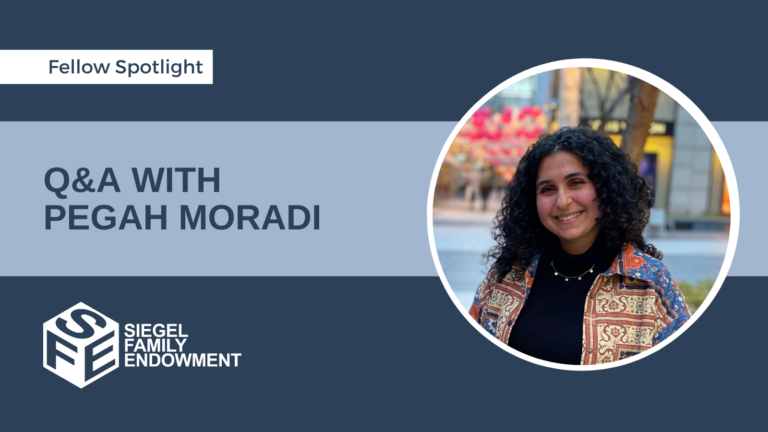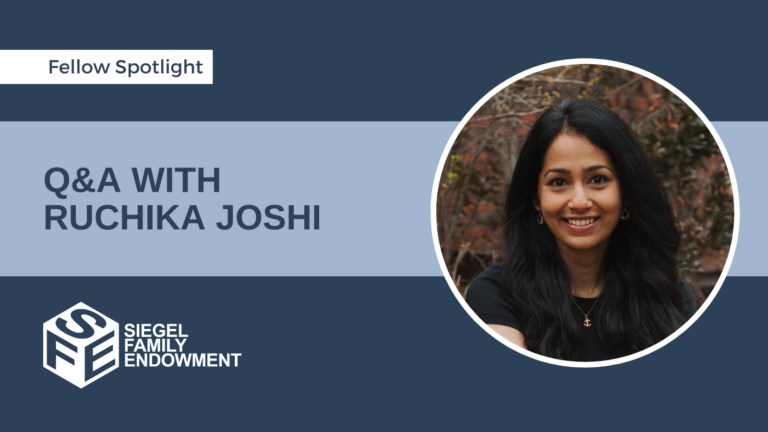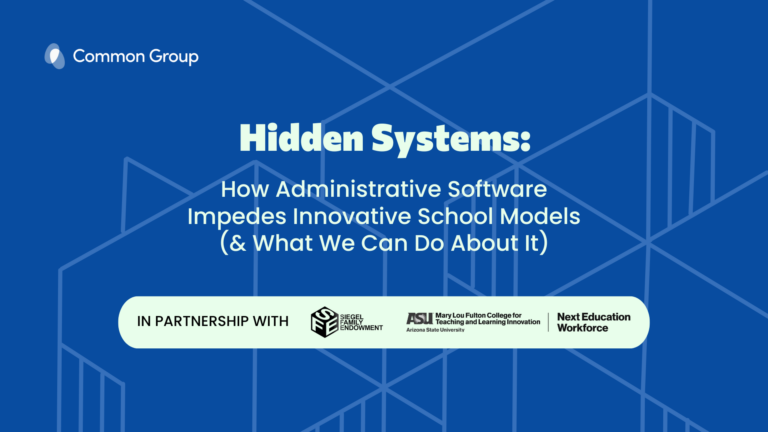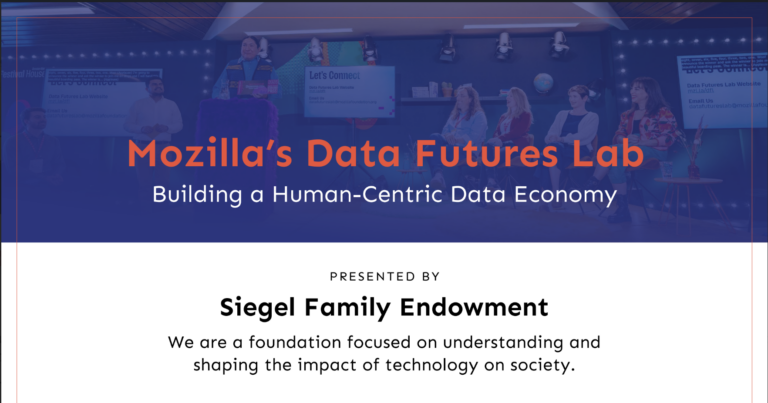CitizensNYC’s CEO Reflects on the Organization at 50 Years and Explains Why Its Work Is More Relevant Than Ever
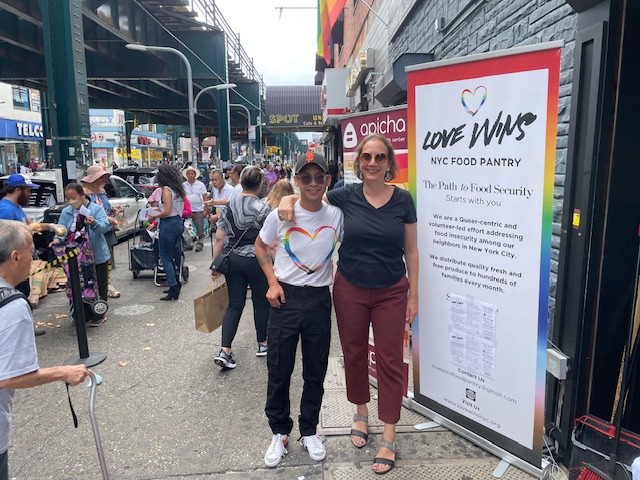
A youth beekeeping initiative on Staten Island. An organization to help immigrant youth in Brooklyn navigate the complexities of the New York City public school system. A community garden in the Bronx. A multigenerational theater program in Harlem. These are all local efforts supported by CitizensNYC, a pioneering microfunding organization supporting community-proposed and led projects throughout New York City’s five boroughs.
As CitizensNYC celebrates its fiftieth anniversary, we sat down with CEO Julie L. Shapiro to learn more about how CitizensNYC serves as an important bridge between local community members, city agencies, philanthropic organizations, and other institutions; how microgrants work; how CitizensNYC supports community efforts through capacity-building and technical assistance; and the opportunities and challenges ahead.
You’re coming up on your first year at the helm at CitizensNYC. How is it going so far?
It’s been a wonderful first year! I’m very excited to have found this organization, and for the organization to have found me. It’s especially exciting to be working in the year leading up to our 50th anniversary. It’s been a great time to reflect on our history and founding principles, and to chart a course for the future.
You’ve been a leader in many New York-based organizations that take a community-centered and partnership-based approach to change. What did you take from these experiences to your work at CitizensNYC?
I’ve spent my career working to connect resources to communities, whether that’s through schools and public education or youth development and workforce development programs. CitizensNYC really stood out for me as an organization that’s putting its values into practice by getting resources to communities at the most local level.
I also have a real love of New York City and its communities and all its wonderful diversity. Through all of my previous roles, I’ve become a specialist in partnerships. CitizensNYC is another wonderful in-between organization that aligns funders, corporations, and government actors with small nonprofits and small businesses. My experience of building bridges and creating partnerships has been really helpful in this job.
Why is that bridge-building work so important?
New York is a huge city with over eight million residents. We have hundreds of neighborhoods. A lot of amazing work happens at the neighborhood level. But the city, philanthropic organizations, and other funders sometimes struggle to get funding into the neighborhoods at the local level.
There are a lot of institutional actors who really want to support local work, but don’t know how to identify the right partners, and don’t know how to enable that work with funding and other resources. At CitizensNYC we have this incredible community of local leaders. We can be that bridge builder, making sure that funds get into the hands of people doing the work at the community level and supporting their impact.
How does CitizensNYC do this work of getting funding and resources out to changemakers in New York City’s neighborhoods?
CitizensNYC is a strategic, grassroots grantmaker. Twice a year we put out an open call for ideas. We have an outreach team that goes into many of the neighborhoods of New York City, partnering up with elected officials and other nonprofits. We go to church basements and parks and schools—all the places that people congregate. We look for community leaders who are working to make their communities healthier, more resilient, and more connected. It’s great to see the amazing range of ideas that come from them.
The call for ideas is wide open. We don’t dictate the areas that we want to fund. We simply ask: What are the issues that you’re seeing in your community that you’d like to address? How would you like to address them? What is the impact that you’re seeking to have?
We then get thousands of applications for microgrants from small nonprofits, volunteer-led groups, small businesses, and public schools. We fund as many of these applications as we can—typically about 10% of all proposals—with grants up to $5,000. This year our total grantmaking will be over one million dollars.
We want to make sure that we’re reaching New York City residents in all their diversity and that we’re funding projects in every neighborhood, especially neighborhoods that are typically under-resourced. We pay a lot of attention to the demographics of who we fund to make sure that we are supporting all of the diverse populations in the city.
Do you prioritize any particular topics when you choose which projects to fund?
We don’t prescribe any particular topic areas because we think it’s important that people in the community identify the issues that are most important to them. That said, we pay attention to the ideas that come in and work to make sure that we can support those particular topics.
For example, in recent years, environmental justice and climate resilience issues have emerged as a key area that a lot of community leaders want to work on and have great ideas in. We have looked for other funders that are particularly interested in this area because we’ve seen the needs arise. We also have a capacity-building series specifically for our environmental and climate grantee partners.
Your microgrants often lead to other sources of funding and partnerships that can help sustain organizations. How does that process work?
It really depends on what the organization’s goals are. There are some organizations or efforts that are small—and maybe they’re going to stay small—but they provide a critical resource and serve a key purpose in their community. A community garden is a good example of this. It’s important that it’s there year-after-year for people to grow produce—and to serve additional functions such as gathering the community for events and around health and wellness issues.
In those cases, we want to find those groups, and we want to support them, and we’re willing to support them year-after-year and help with their sustainability. We often introduce those smaller organizations to other folks who are doing similar work or who are working in the same neighborhood.
In other cases, we want to help organizations grow. We’re very often the first funder. That does so much for a new grantee partner in demonstrating support and confidence in the work that they do. We provide the seed funding as well as networking and skill-building opportunities and those lay the foundation for organizations to successfully pursue additional sources of funding.
For example, we worked with a group in Brooklyn that was trying to preserve a piece of land that was important in the neighborhood. We provided a couple of seed grants, and over time they grew into a full, nonprofit, multi-service organization. They are now a community land trust, but they also provide supports and education to minority- and women-owned businesses. They run participatory budgeting projects. They are an anchor to three neighborhoods in Brooklyn around a range of issues. We helped get them to a place where they can apply for other sources of private funding and access government funding. Over time we’ve tried to be more intentional about helping people and groups build that pathway towards growth if that’s what they want to do.
You support organizations in other ways besides microgrants and connections to follow-on funding from other sources. What types of capacity-building and technical support does CitizensNYC offer to its grantees?
Microgrants are an important piece of what we do at CitizensNYC, but we also provide lots of opportunities for people to learn in cohorts and to get support from their peers.
Each year we survey our grantee partners and ask them about the skills that they’d like to build. We develop a capacity-building series that’s directly responsive to those skill areas that they’ve identified. This year we’ll be running half a dozen workshops to support our grantee partners in social media; working with volunteers; how to get government support; how to develop partnerships; how to fundraise; and other topics.
It’s been very useful for many of our grantee partners to be part of that learning community, both because of what they learn, and because they have an opportunity to gather with other grantee partners in a supportive environment.
In addition, we recently began offering collaborative impact grants that are slightly higher than our typical grants. The collaborative impact grants encourage grantees to partner with each other on more holistic projects in their neighborhoods.
CitizensNYC has also been a leader in connecting hyperlocal community organizations to city initiatives. Tell us more about that work.
CitizensNYC has a five-year master contract with New York City that designates us as an official city partner, authorized to disburse grants in collaboration with any city agency working with local community groups to carry out their initiatives. We support agencies by helping to design solicitations, lead outreach, and assist in selecting local organizations to implement programs. As a fiscal conduit, we also ensure that funds are distributed efficiently and on time.
This contract has been a game-changer for two reasons. First, many city agencies face challenges in identifying and engaging community partners. CitizensNYC already has deep, trusted relationships with grassroots groups on the ground, allowing us to make those connections seamlessly. Second, city contracting is complicated and it’s hard to get paid in a timely fashion. By serving as an intermediary, we’re able to cut through red tape and accelerate access to funding.
In the past year alone, we helped the city distribute over $8 million to more than 300 community-based nonprofits. These grants supported a wide range of initiatives—from job fairs and participatory budgeting to youth councils and childcare matching. It’s a powerful way to ensure local leaders are shaping and participating in citywide initiatives.
The response from our city agency partners has been overwhelmingly positive. Many are spreading the word to colleagues at other agencies to say, “Here’s a tool that makes it easier to engage local communities.” We’re excited to build on this momentum and expand the model to even more agencies in the future.
What are you learning about the impact of your partnerships and work more generally?
We’re thinking about impact in a couple of different ways. First, we think about impact with our grantees. We ask them to complete final reports that are designed to help us continuously learn and improve. In those, we ask whether they’ve accomplished the change that they set out to tackle. If they did, we ask how they did it and what the enabling factors were. If not, we ask about the obstacles and challenges.
When we look at the reports both individually and as a whole, we try to understand how many community members were reached; how many volunteers were engaged; indicators of growth such as securing additional private or governmental funding or formalization as a 501(c)(3); their reach through social media; the development of new partnerships; and their reach in historically underserved communities in New York City.
We also use the feedback in the reports to understand whether CitizensNYC is building an ecosystem of local leaders who are connected, resourced, and growing. We look at whether we are getting more money out and whether we have had to leave high-quality ideas on the table. We also get feedback from our grantee partners about how well we’ve supported them with skill-building opportunities and community-building.
As you celebrate your first fifty years of existence, what are you learning? What challenges do you expect that you’ll continue to wrestle with?
New Yorkers, along with the rest of the country, are facing economic volatility and uncertainty right now. Along with that is a contraction in government funding for the nonprofit sector. This is a time when the work of CitizensNYC matters more than ever. Community leaders are going to need to do more to build resiliency at the local level. We really want to be working as hard and as fast as we can to make sure we can get resources to those local partners.
The climate resiliency efforts that we’ve funded are a perfect example of how community organizations are stepping up on an issue with global implications and show why our work is so important. For example, we’re supporting shoreline cleanup stations in the Rockaways. We’re supporting composting and zero waste education in the Bronx. We’re supporting an innovative pocket forest on Roosevelt Island. We’re supporting sustainable food distribution models throughout Brooklyn.
These are all examples in which local leaders see those climate impacts firsthand—whether it’s a high heat day and there’s no shade in their neighborhood, or when neighborhoods flood because of unusual storm activity. These are examples where local leaders and local efforts can really shore up resources to make their neighborhoods more resilient against climate change.
In terms of the issues we will continue to wrestle with, we want to make sure that we are responding to the challenges that New Yorkers are currently facing. We want to make sure that we support New York City’s immigrant communities. As worries about inflation and the cost of goods intensify, we want to support projects that deliver food and other necessities. Community leaders will tell us what their communities need. They are able to spot challenges that are emerging at the local level and can propose solutions.
What’s next for CitizensNYC?
We’ve just launched a fellowship program for which we’re going to name three fellows a year for the next five years. The fellows are former grantee partners who’ve been successful and have outgrown our eligibility for funding. In addition to providing mentoring and coaching to current and prospective grantee partners, they’ll advise us on outreach, engagement, choosing the right applications, and designing our capacity-building program. This program was funded through the family of our co-founder Osborn Elliott, and it feels especially meaningful to be honoring his legacy with an innovative new initiative as we celebrate our 50th anniversary.
We will also have some targeted grants that are directed to organizations that are poised for growth. We’ll be looking for groups that we’ve already funded and asking them about what is needed to get them to their next stage of growth. We’re excited to support those efforts.
Additionally, we’re trying to continue to deepen our partnerships with government, philanthropy, and the private sector. We’d like to do more capacity-building, and of course, we’re trying to increase our grantmaking year-over-year.
###
Julie L. Shapiro serves as the seventh CEO of CitizensNYC, a role that she assumed in 2024. Julie has spent more than 25 years in the nonprofit sector, predominantly in New York City, working at the intersection of workforce development, youth development, and education. She is known for her strong track record of creative partnerships and collective impact work to advance educational and economic equity.
Julie previously served in leadership roles at The New Teacher Project (TNTP), the Fund for Public Schools, The Door, and Seedco. She received her bachelor’s degree from Brown University and a master’s degree in public policy from Harvard Kennedy School. Julie lives in Brooklyn with her partner and their two teenage daughters.


